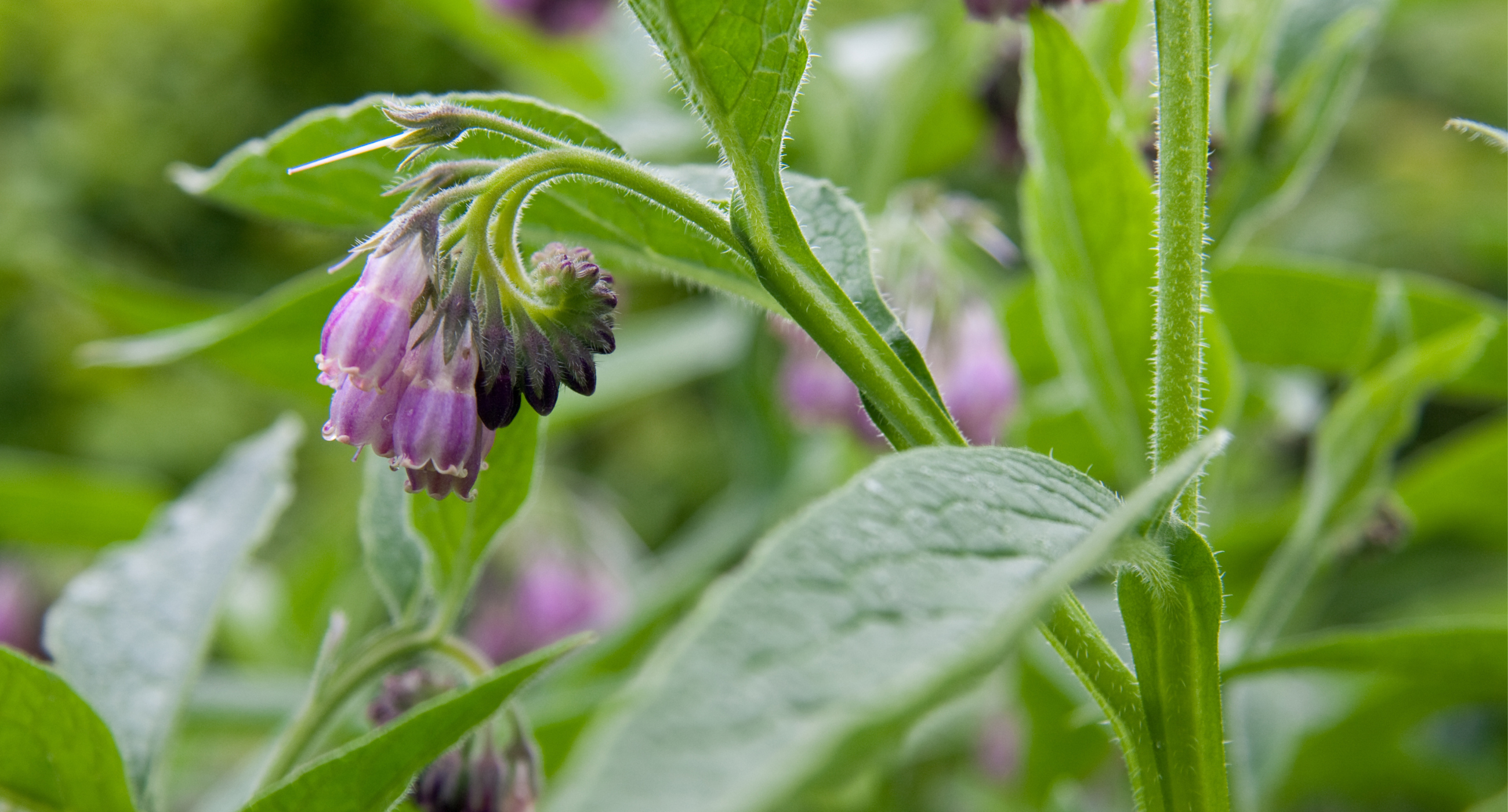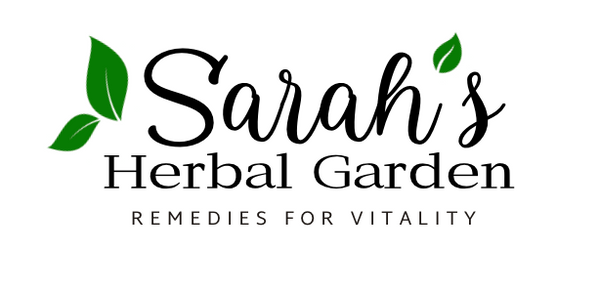
Comfrey
Scientific Name: Symphytum officinale
Herbal Profile: Comfrey
Scientific Name: Symphytum officinale
Family: Boraginaceae
Common Names: Comfrey, Knitbone, Boneset, Bruisewort
Description:
Comfrey is a perennial herb native to Europe and Asia but has been naturalized in North America. It typically grows in damp, grassy places and can reach heights of up to 4 feet. The plant has large, hairy leaves and produces bell-shaped flowers that range in color from white to pink, purple, or blue. The roots and leaves of comfrey have been traditionally used for medicinal purposes due to their potent healing properties.
Traditional Uses:
Comfrey has been used for centuries in traditional medicine for its ability to promote wound healing and tissue repair. It is especially known for its external use in treating injuries. Common traditional uses include:
- Wound Healing and Skin Conditions: Comfrey is renowned for its ability to speed up the healing of wounds, cuts, bruises, and abrasions. It has been used to treat various skin conditions, including eczema, psoriasis, and dermatitis. The herb’s astringent and anti-inflammatory properties help reduce swelling and promote the healing of damaged tissues.
- Bone and Joint Health: Traditionally known as “knitbone,” comfrey has been used to support the healing of fractures, sprains, and broken bones. Its high content of allantoin and rosmarinic acid helps stimulate cell growth, reduce inflammation, and promote the regeneration of bones and connective tissues.
- Pain Relief: Comfrey has analgesic (pain-relieving) properties and has been used to alleviate pain associated with sprains, muscle strains, arthritis, and other musculoskeletal conditions. It is often applied topically in the form of poultices or compresses.
- Anti-Inflammatory Effects: The herb has been traditionally used to reduce inflammation in joints, muscles, and tissues. It is commonly used in poultices and salves to alleviate pain and swelling in conditions such as rheumatoid arthritis and osteoarthritis.
- Varicose Veins and Hemorrhoids: Comfrey is sometimes used to treat varicose veins and hemorrhoids due to its ability to reduce swelling and inflammation. It helps soothe the affected area and promote healing.
Active Compounds:
- Allantoin: A key compound in comfrey that promotes cell proliferation and regeneration, aiding in wound healing and tissue repair.
- Rosmarinic Acid: Provides anti-inflammatory and antioxidant effects, helping to reduce inflammation and protect tissues from oxidative stress.
- Tannins: Contribute to the astringent properties of comfrey, which help tighten tissues and reduce bleeding.
- Mucilage: A soothing compound that helps moisturize and protect irritated tissues.
- Pyrrolizidine Alkaloids (PAs): Compounds that have raised concerns due to their potential hepatotoxicity (liver toxicity). PAs can accumulate in the liver over time and cause liver damage when comfrey is taken internally or used on broken skin.
Preparation and Dosage:
- Poultice:
- Compress:
- Ointment or Salve:
- Infusion (for External Use Only):
- Oil Infusion:
Safety and Precautions:
- Internal Use Warning: Comfrey contains pyrrolizidine alkaloids (PAs), which can cause serious liver damage and have carcinogenic potential. Due to these risks, the internal use of comfrey is not recommended. It should only be used externally, and even then, with caution.
- Avoid Use on Broken Skin: Do not apply comfrey to broken or abraded skin, as the pyrrolizidine alkaloids can be absorbed into the bloodstream and potentially cause liver damage.
- Pregnancy and Breastfeeding: Comfrey should not be used during pregnancy or breastfeeding due to the potential risk of liver toxicity and the possibility of pyrrolizidine alkaloids being transferred to the baby.
- Children: Due to the risk of liver toxicity, comfrey should not be used in children.
- Allergic Reactions: Some individuals may experience allergic reactions, such as skin rashes or irritation. Discontinue use if any adverse effects occur.
- Long-Term Use: Avoid prolonged use of comfrey, even externally, to prevent the risk of PA accumulation and potential liver damage. It is generally recommended to use comfrey topically for no more than 4-6 weeks per year.
Conclusion:
Comfrey is a powerful herb with a long history of use in traditional medicine, particularly for its ability to promote wound healing and tissue repair. It is highly effective for treating bruises, sprains, and bone injuries and provides significant relief for inflammatory conditions and pain. However, due to its content of pyrrolizidine alkaloids, comfrey should be used with caution and only externally. Always consult with a healthcare professional before using comfrey, especially if you have underlying health conditions or are pregnant, breastfeeding, or considering using it for children.
